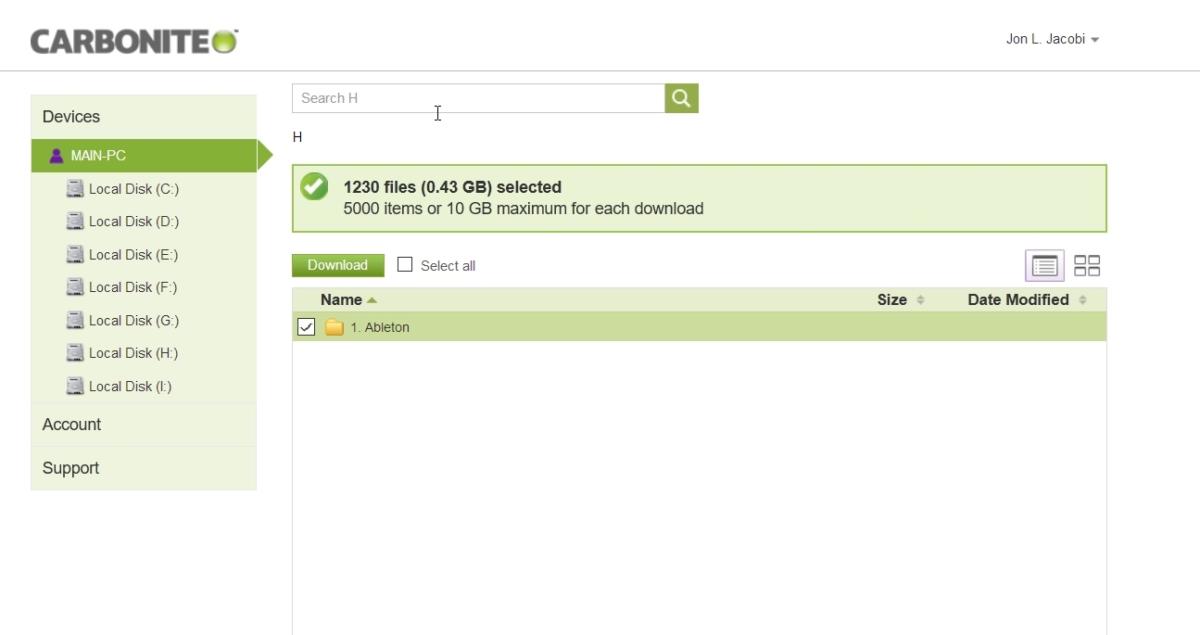

The security options available under Carbonite range from pretty secure to extremely secure, depending on what subscription you have. (Image credit: Future) Carbonite security We did find the backing up process was relatively slow, even with our limited upload speeds, but once the first run is complete this isn't too much to worry about. There isn't the option to open or to stream your files from inside a browser, for example. It is possible to log into Carbonite on the web, and to view (and restore) your files from there, but you only get the basics as far as an online interface is concerned.

You do get the option to pause the backing up process (or you can of course just close Carbonite down), but under normal circumstances, Carbonite will be running away in the background, quietly copying new data and file changes to the cloud for you. You don't get anything as fancy as scheduled backing up here – Carbonite is either busy backing up your files and monitoring your chosen folders, or it isn't.

Again, these options are simple to access and straightforward to work through, so you won't be wasting time hunting through help screens.
CARBONITE COST SECOND COMPUTER DOWNLOAD
If you ever need to restore some or all of your files, Carbonite can download them to a single folder (which is useful if you're doing the restore from a different machine), or try and put them back in their original location on your system. So, we're again hoping to see some of that coming in 2021.(Image credit: Future) Carbonite interfaceĬarbonite doesn't offer the most intuitive interface we've ever come across – the method of picking files from disk to back up or ignore takes a few minutes to get used to (what's wrong with tick boxes?) – but in general the desktop clients get the job done in a simple and straightforward way. Having these two coexist together in one management console is really what we're looking for, but we went for it knowing this. We also knew that there would be some integration coming down the road. Because they're two separate platforms, I have to log in to my Microsoft platform to manage it, and I have to log into my Carbonite server backup platform to manage it. I generally care less about the visual aesthetics of an application as long as it does what it needed to do, which is true in the case of this solution. If they gave it a facelift and put some better design around their dashboard, that would be tremendous. So, I don't know when or where that will go or if that will go anywhere, but we are hopeful to see something. I would love to see the public cloud support for object storage, and it would be great, but what I always hear from the folks at Carbonite is that in a lot of cases, it directly competes with their cloud offering. The support for object storage isn't quite there yet. Its public cloud support can be improved. So, we're again hoping to see some of that coming in 2021." We also knew that there would be some integration coming down the road. Having these two coexist together in one management console is really what we're looking for, but we went for it knowing this. I generally care less about the visual aesthetics of an application as long as it does what it needed to do, which is true in the case of this solution. I would love to see the public cloud support for object storage, and it would be great, but what I always hear from the folks at Carbonite is that in a lot of cases, it directly competes with their cloud offering. Its public cloud support can be improved. "The support for object storage isn't quite there yet.One of the main reasons for looking at Carbonite was their support for platforms like AIX and AS/400 Series." "The Granular Restore of SQL feature has been a lifesaver more times than I can count.


 0 kommentar(er)
0 kommentar(er)
